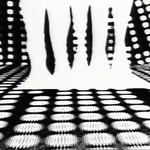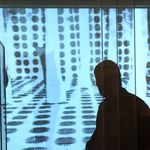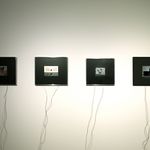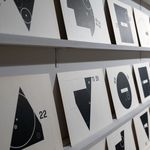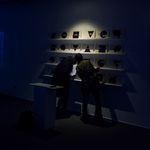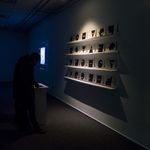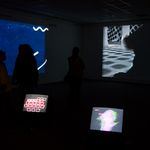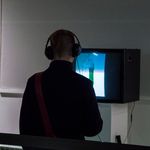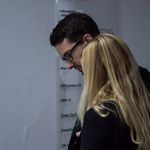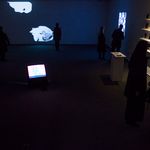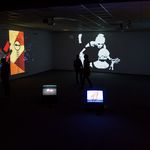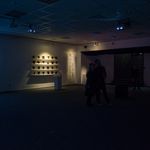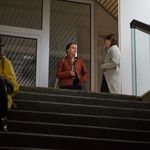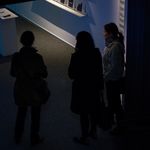Pioneers of Computer Art

Pioneers of Computer Art
UGM Studio, Trg Leona Štuklja 2
opening: Friday, 6 October 2017, at 19:00
Kindly invited to the opening of the archival exhibition Pioneers of computer art, the essence of which derives from the question of why technology needs the artist and vice versa. The exhibition was created in collaboration of the International Festival of Computer Arts, Maribor Art Gallery, Museum of Modern Art and the Museum of Contemporary Art Metelkova.
Curator: Ida Hiršenfelder
Exhibition design: Miha Turšič
Transfer of the exhibition: Miha Horvat
Technical support: Andrej Firm
Participating artists: Franc Curk, Goran Devide, Hidrogizma, Brina Jež Brezavšček, Marko Košnik, Seta Mušič, Skupina OHO (Marko Pogačnik), Marko Peljhan, Marjan Šijanec, Miha Vipotnik and Edward Zajec.
An hour before the opening of the exhibition - at 18:00 - join us at UGM Studio for a talk with Kathy Rae Huffman, a curator, writer, producer, researcher, lecturer and expert for video and media art.
Pioneers of Computer Art presents artistic approaches at the intersections of different fields (programmed art, electronic music, and multimedia theater) that augured the use of computers before they came into general use. The featured artists worked as cultural trailblazers: encountering new scientific and technological tools, they foresaw new modes of thinking and ways of viewing space through the multisensory perception of art, development of various social relations, and hybrid fusions of digital, electronic, and organic materials. They considered the impact of mathematical processes and digital technologies on politics and culture. They used algorithms and coded language to direct patterns on the pictorial plane, determine performative gestures, program generative sound compositions, and open up architecture and physical space. They posed questions about interactivity, processuality, generativeness, programmability and virtuality before these terms became embedded in everyday speech.
They created a space for the reciprocal sending and receiving of information flows, a space of involvement, activity, and multidirectional interactivity. What happens in this interspace is a metamorphosis that creates a networked body or a new mode of perception in the interaction of the media. In the media space of an artwork, consciousness can temporarily expand and control all information that is input and output. The attraction of media art lies in the fact that it enables insights into input systems, where the meta-structures preconditioning the cultural and political determination of technological tools can be discerned. Artists explore signifiers in technological systems, which can then help them understand how their own cultures work.
Instead of stable and immutable tools such artists opt for error-prone and alterable prototype technologies. In using these, their aim is to create autonomous zones in which to test the boundaries of perception and thinking; rather than deal with today’s high-tech tools they focus on those that will become the high-tech tools of tomorrow. Media art engages with the political and the emotional, providing an incompatible space that tempers the excessive rigidity of the former and the excessive softness of the latter.
Media artists are always sensitive technologists. They teach us that the wealth of information lies in its reduction, emptiness, and deficiencies. The function of media art is to raise people’s awareness of the psychological and social consequences of technological development, with fascination and doubt intertwining in equal measure.
Artifacts are like antennas for enhancing human perception, offering an insight into the influences of technology and media by testing their effects in artworks. Artists working in the field of media art often work together with technologists. A complex computer network thus not only encodes itself, but also the methods of producing art. Although they are the driver of ideas, artists are not alone in realizing the artworks. Signed under every work, in addition to the authors of the idea, are numerous collaborators who play equally important parts in their creation. Computers encode the protocols of interdisciplinary work, in which artists deliberately and persistently break the rules of the game, thereby creating media information that does not tend toward profusion, but instead toward reduction, emptiness, and boredom.
The value of early artistic attempts that strove to engulf all the senses with audiovisual stimuli is not only that they foresaw many of the issues we are now concerned with, but also their search for media solutions that offer more than light entertainment, becoming also a means of triggering a higher state of awareness. In this context computers have not depersonalized people, but made them more open, emotional, and connected.
Special thanks: Dušan Dovč (Postaja DIVA/SCCA-Ljubljana), Izidor Fijavž in Andreja Mlakar (KSEVT), Petja Grafenauer, Jožica Hafner (RTV Slovenija), Larisa Kazić, Neven Korda, Jožica Leskovar (RTV Slovenija), Sendi Mango, Marko Ornik (oko-uho), Katarina Petrović, Zlata Remškar, Katja Somrak (PTL), Uroš Veber (Projekt Atol), Dragan Živadinov
Along with the International Festival of Computer Arts, join us also on Tuesday, 10 October 2017, at 18:00, Robert Bobnič will be giving a lecture on trust and mistrust in algorithmic and network processes. The lecture is organised by the Journal for contemporary art criticism and theory, ŠUM.
KINDLY INVITED!

